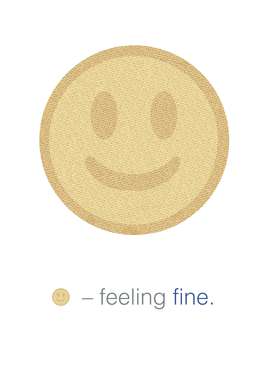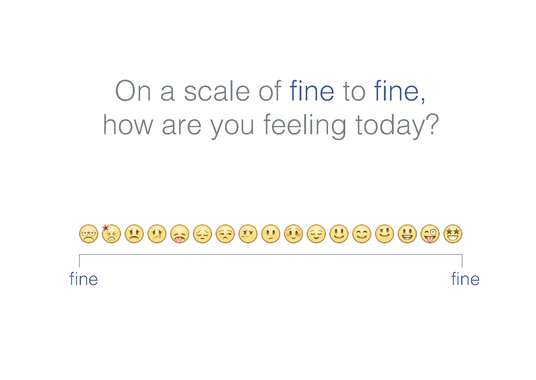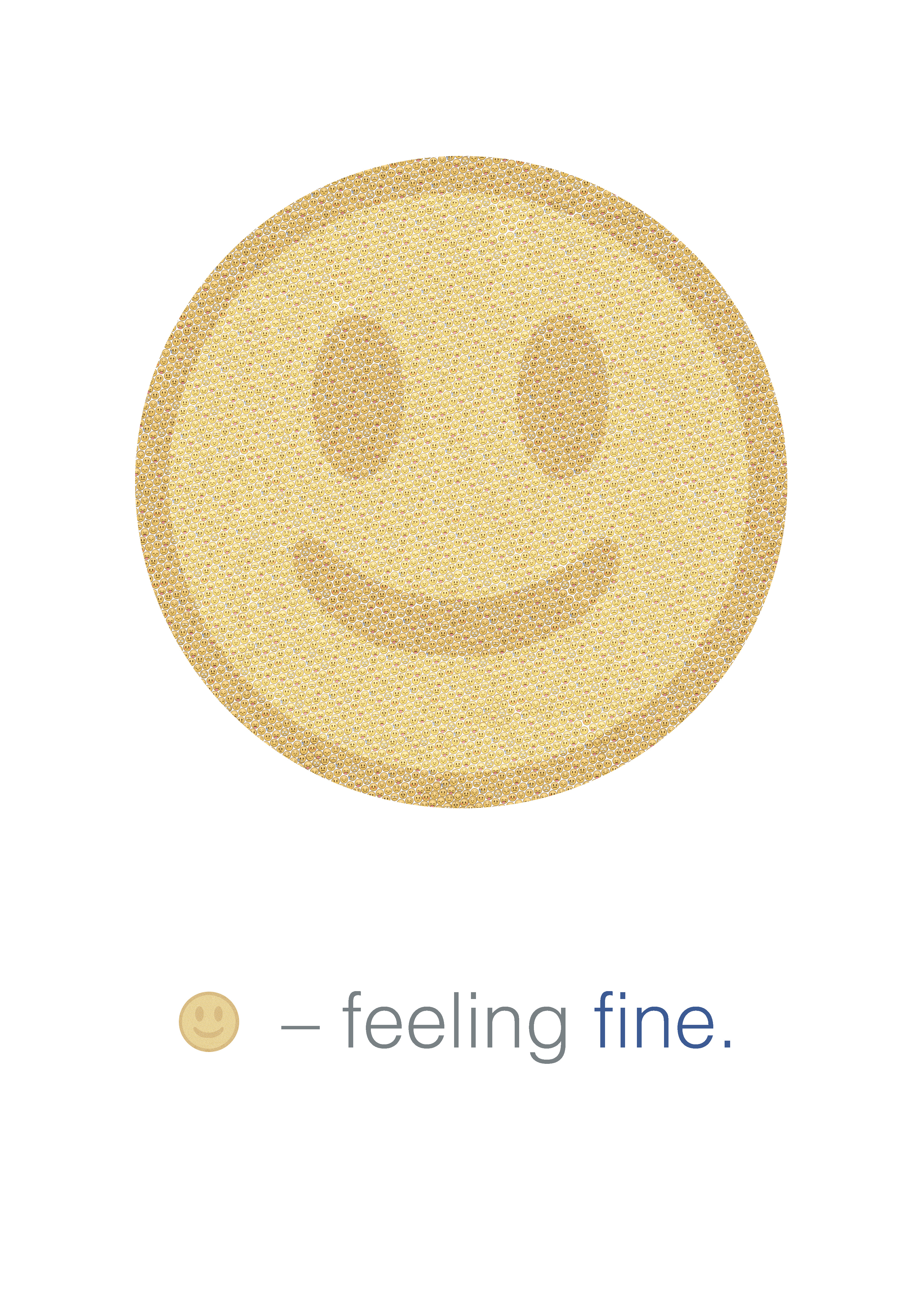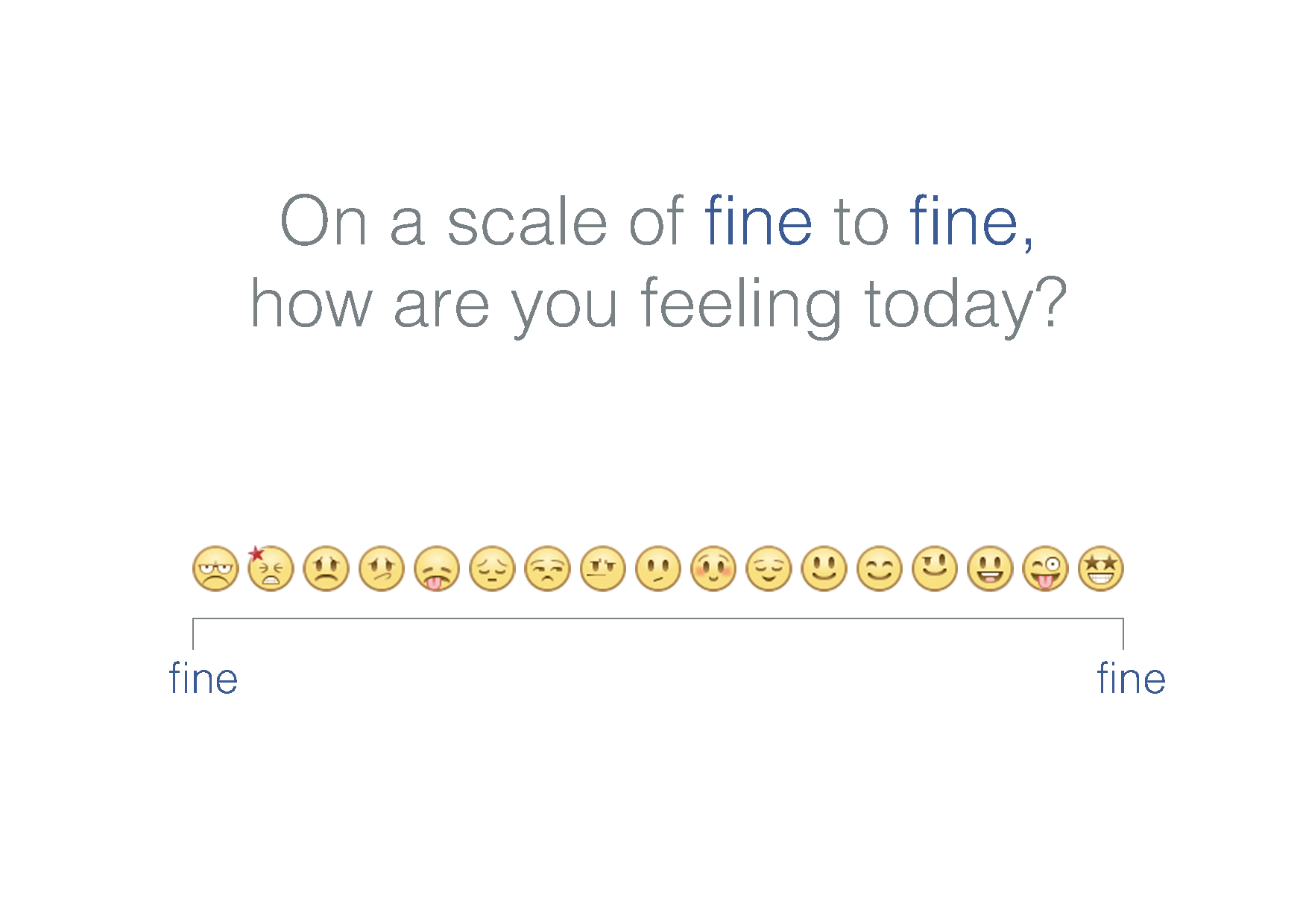Feeling Fine
This work has not been commented by curators.
Title
Feeling Fine
Headline
Feeling Fine
Concept author(s)
Claire Callander
Concept author year(s) of birth
1993
Concept author(s) contribution
Creator of work
Concept author(s) Country
Australia
Friendly Competition
Radical intimacies: dialogue in our times (2014)
Competition category
Visual communication practice
Competition subcategory
static
Competition field
academic
Competition subfield
student
Subfield description
Swinburne University of Technology
Check out the Radical intimacies: dialogue in our times 2014 outlines of Memefest Friendly competition.
Description of idea
Describe your idea and concept of your work in relation to the festival outlines:
What kind of communication approach do you use?
My approach for this campaign is to address the fact that emotion cannot always be communicated through Facebook and online social media websites. I want to focus on the fact that in today’s society with all the advancements in technology and our ever-growing presence on social media, the intimacy of real-life, face-to-face conversation is lost and dialogue is declining. People these days turn to Facebook and other social media to converse with each other, rather than having a face-to-face conversation. I want to focus on how we don’t really know how other people are simply by looking at their Facebook profile; rather we need to actually participate in dialogue to find out how a person is feeling and whether they have any problems or issues in their life. These intimate details of a person’s life would not be revealed over a social media account – it is something that requires personal conversation and a comfortable environment. Through this campaign I want to make people aware of the fact that a Facebook profile may not always represent that particular person accurately, and that people should take the time to sit down and have a conversation with the people that they care about to make sure that they are ok.
What are in your opinion concrete benefits to the society because of your communication?
I believe that this campaign will make people stop and think about their communication with others – it may get them thinking about certain people in their lives and that perhaps they should organise a catch-up so that they may participate in dialogue and find out more about that person’s life, as well as how they are feeling. I hope to make society realise that Facebook is not always the most accurate way of finding out a person’s emotions, and that it will encourage more dialogue between friends.
What did you personally learn from creating your submitted work?
I learnt that there certainly is a lack of dialogue in our times, however it is extremely easy to rectify this by picking up the phone or catching up in person to have a face-to-face conversation. Most of us are very busy and lead hectic lives, however I do believe that it’s not that hard to make time for the people we love and to make sure that they are ok. Sometimes engaging in dialogue and having a conversation can make the difference in someone’s life, and I think that it is so important for everyone to know that there is someone around that they are able to talk to, rather than hiding their emotions behind an online social media site, or by not engaging in quality dialogue.
Why is your work, GOOD communication WORK?
My work is good advertising design work because it is uncluttered, to the point and will be placed in areas that people will stop and pay attention to it. My designs incorporate Facebook visuals that are familiar to the audience – this social media site is used by almost every single person who will view the ad, and as it is something that they are able to relate to, they will be more likely to give their attention to it.
The type is easy to read and contrasts against the white background, so there will be no trouble for the viewer to see it. The postcard media questions the viewer themselves, asking of them: ‘how are YOU feeling?’, through which the viewer is personally engaged with the ad and feels as though it relates to them on a individual level.
There is no logo or company image present on the ads, so this in turn will generate dialogue about the different media and cause the audience to question what the ads are about. This kind of hype can go viral across social media websites and in turn generate more dialogue and get more people talking between themselves and to other people, which is essentially what the campaign is all about.
Where and how do you intent do implement your work?
My work would be implemented in a variety of ways and medias across Melbourne. The different mediums will be as follows:
Posters – the ‘feeling fine’ poster will be placed around areas where there will be large amounts of foot traffic so that people will walk past the ad and get the chance to take a closer look at the poster. The design from afar appears to be a face depicting the emotion ‘fine’ but once the viewer gets closer to the poster and examines the poster further, they will see that it is in fact composed of smaller, more varied emotion faces. Potential places this ad could be placed are public transport stations/stops, shopping centers and footpaths near schools. This shows that from afar, people may seem ok as represented by their Facebook page, but once you look closer, they may in fact actually not be ok and have problems/issues in their life that they need to talk about, encouraging dialogue.
Postcards – the ‘On a scale from ‘fine’ to ‘fine’, how are you feeling today?’ postcards will be distributed as part of a letterbox drop, be given out by people to passers-by on the street, or could also be placed in shops as free postcards to promote dialogue. The aim of the postcards is to address the fact that the word ‘fine’ can mean any number of different things, and that the only way to find out how a person is really feeling is to engage in dialogue and have a conversation, rather than relying on a Facebook page.
Stickers – the Facebook ‘feeling fine’ status stickers will be stuck up in random places around the city – as a kind of guerrilla campaign – that will be seen by passers-by and encourage them to walk closer and examine the sticker more closely. At first glance, the sticker looks like a normal Facebook status post but once the viewer looks more closely, it is evident that the face on the status doesn’t match the ‘fine’ emotion that is depicted on Facebook. The aim of these stickers is to generate dialogue about the ads, and to make the viewer see that what is presented on the surface – or on a Facebook profile – is not always an accurate portrayal of a person and their emotions/state of mind. These stickers should incite the viewer to question their own friendships and perhaps encourage them to have a face-to-face conversation with the people that they are close to and care about.
Did your intervention had an effect on other Media. If yes, describe the effect? (Has other media reported on it- how? Were you able to change other media with your work- how?)






